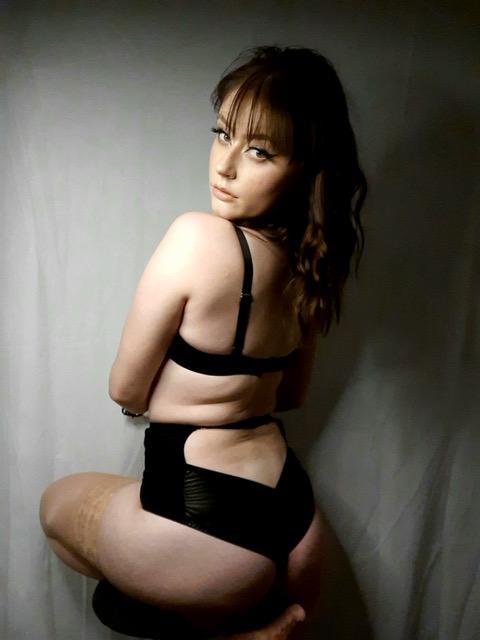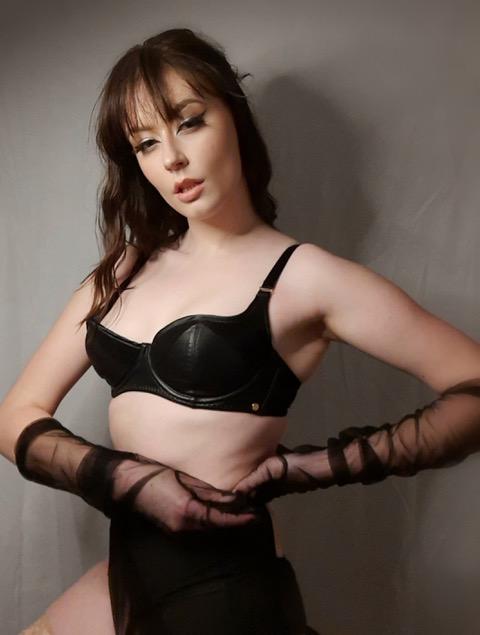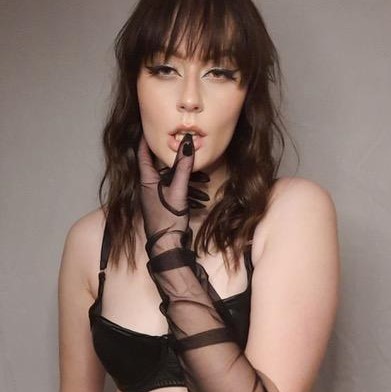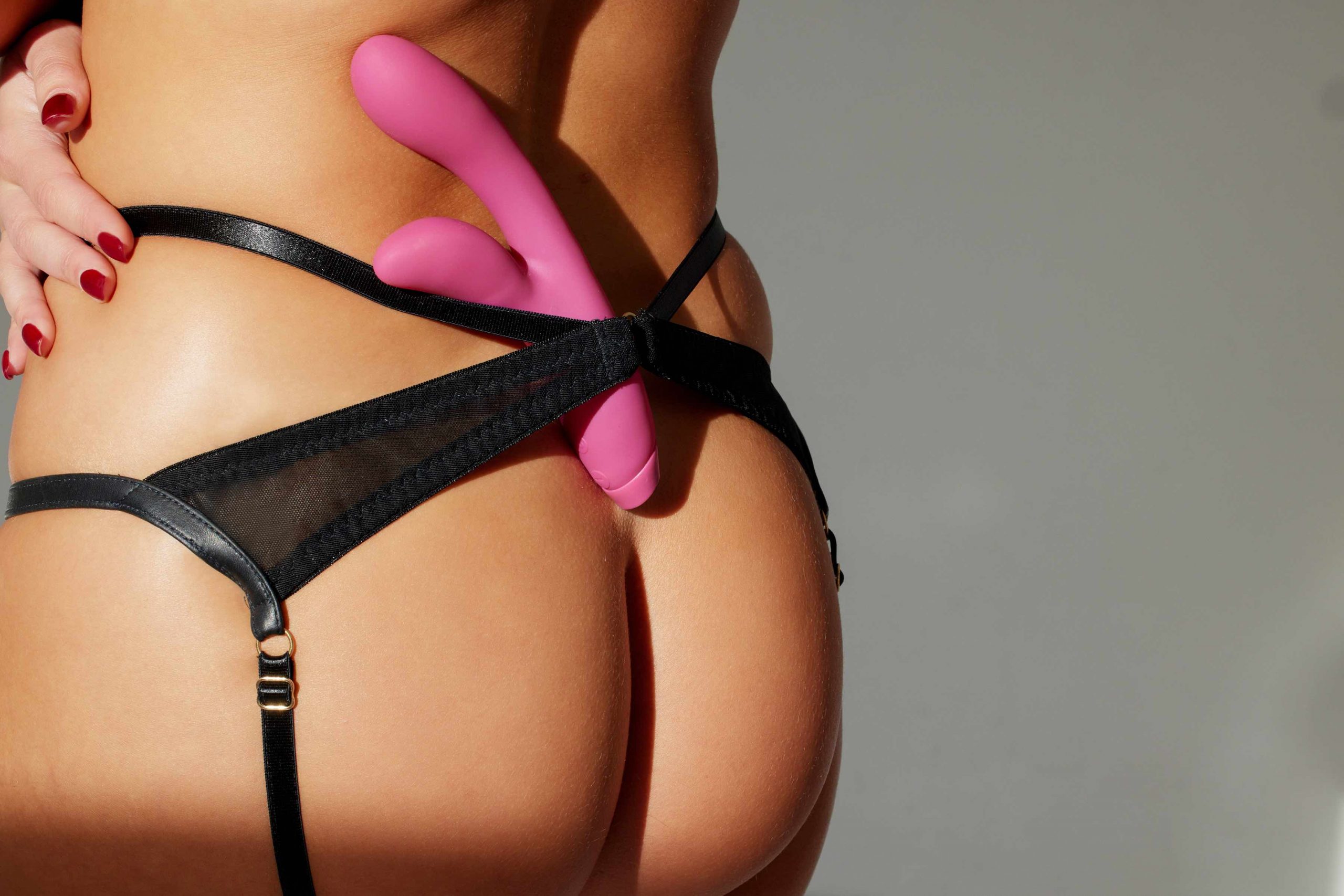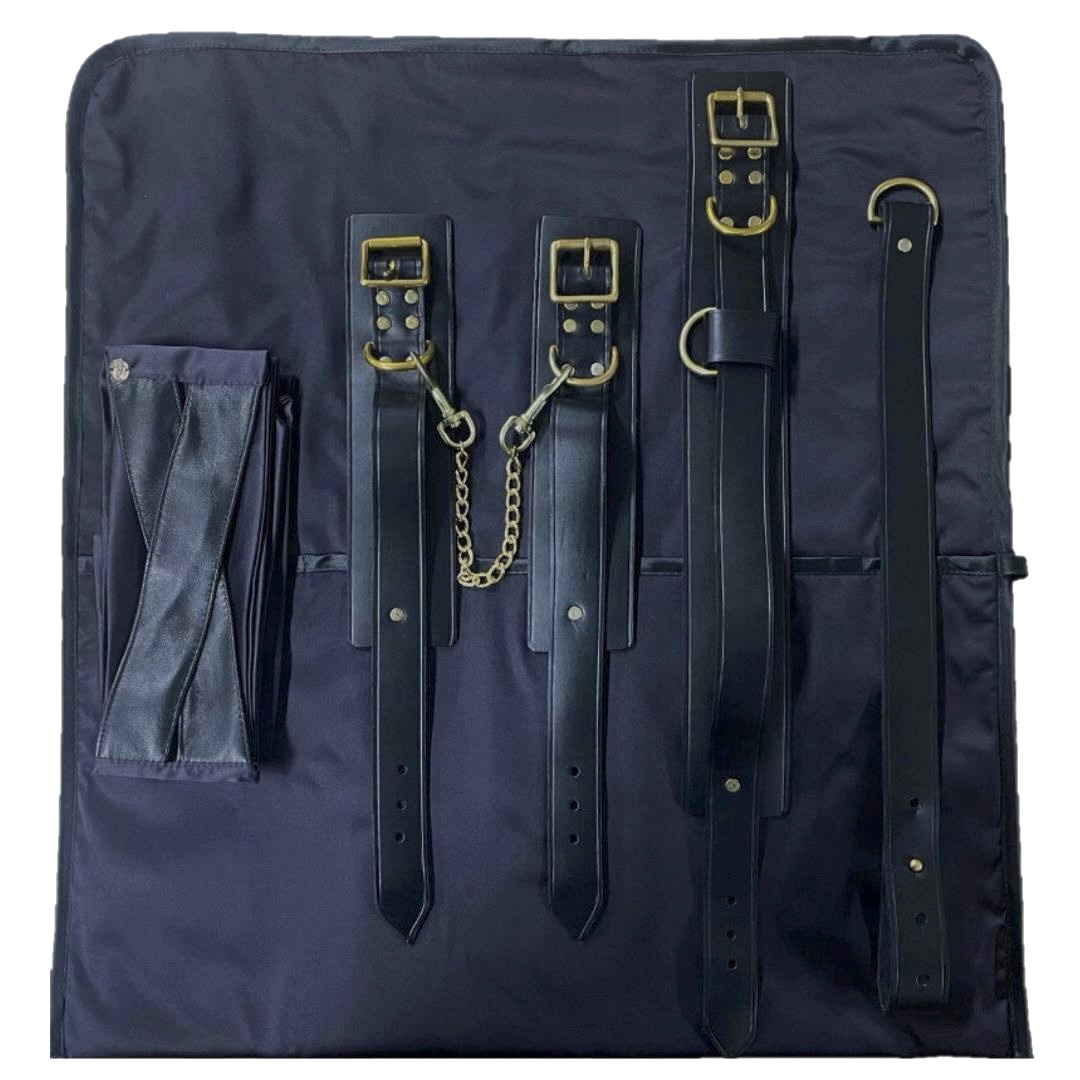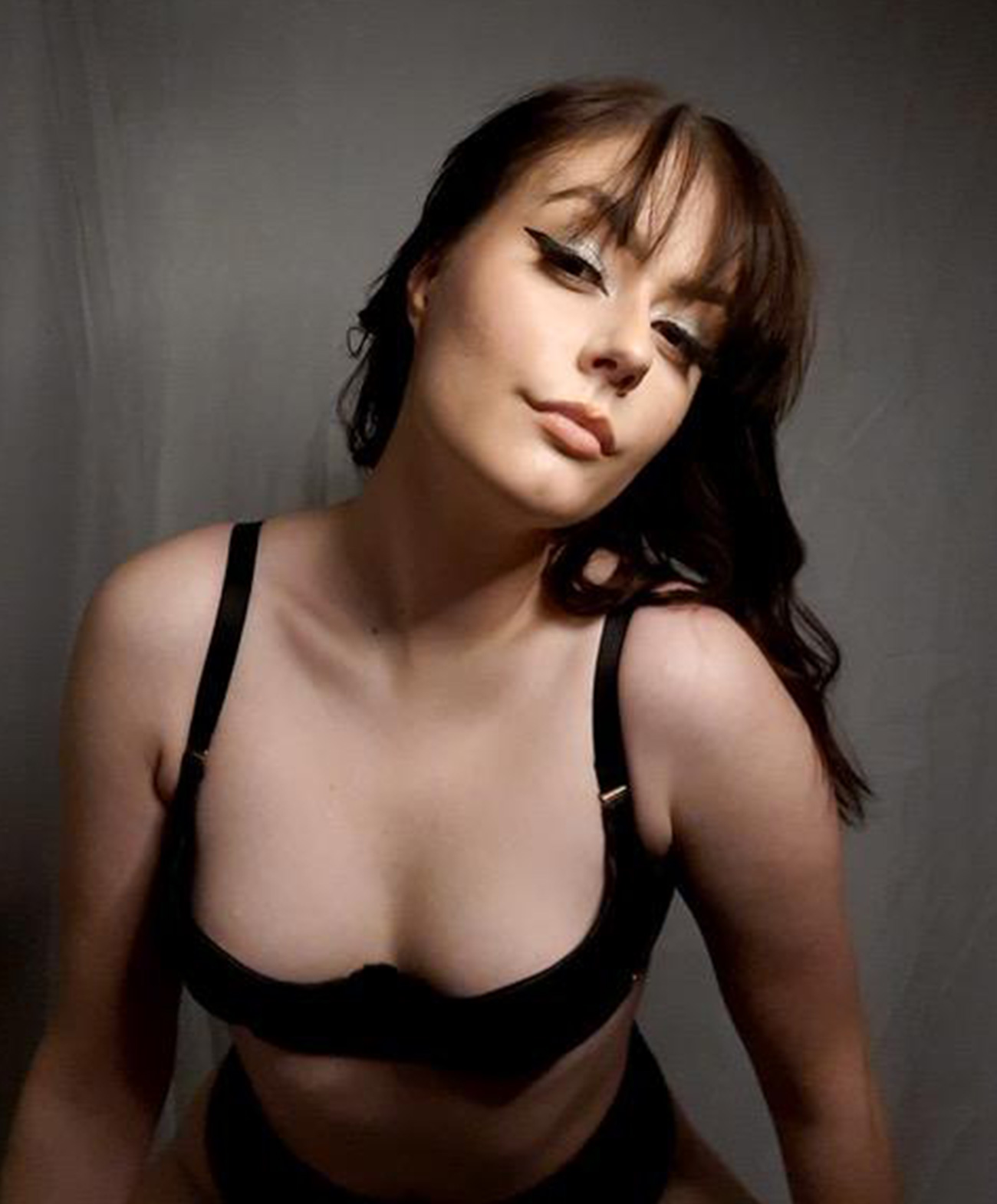
Wickedly Inspirational Women – Lori Allison
aka Bud to Bloom – Disability activist, sex and body positivity blogger
The fashion industry is focused on trends; what’s ‘in’ and, what many would argue more importantly, what’s ‘out’ shapes our wardrobes at large each and every season. But fashion has an unhealthy habit of creating trends, not only in the clothes created, but the people used to promote said creations. Just as ‘sustainability’ has become an important buzzword in recent years for a lot of fashion brands, the past has seen brands create seemingly important focuses on ‘inclusivity’ and ‘diversity’, only for the focus to drop off the next season.
While this doesn’t apply to everyone – in 2017, Rihanna was asked why she hadn’t included a transgender model in her Fenty Beauty campaign, she stated that “I don’t think it’s fair that a woman, or man, be used as a convenient marketing tool” – many brands appear to exploit individuals that differ from hegemonic society, for the means of “ticking the inclusivity box” that’s being focused on that season.
When most speak of these terms, they appear to be focusing on race, gender, size, age; all minorities which rightfully deserve more visibility in fashion; as less than 20% of UK ads feature minority groups. However, one minority group that often appears missing from the conversation all together, is the disabled; despite a fifth of the UK population being recorded as disabled, only 0.06% of ads feature disabled people. Zebedee Management, a talent agency with a mission to represent people with disabilities or alternative appearances, says:
Disability is often left out of the diversity debate; we often receive briefs looking for ‘diversity’, but with no mention of disability, alternative appearances, or trans/non binary.
Again, while some brands are seen to be taking steps to include disabled people – Gucci shook up the industry when they cast 18 year old Down’s syndrome model, Ellie Goldstein, in their beauty campaign in 2020, and Tommy Hilfiger have been leading the way for adaptive fashions – for many brands, particularly those on the high-street, while they may be improving levels of inclusivity in terms of colour and gender, they’re still seemingly obsessed with presenting ‘the perfect body’, and visibility for disability doesn’t seem to be on the agenda.
As Sinéad Burke, writer, broadcaster, fashion-admirer and advocate for disability and design, has questioned,
How can we share the spaces we occupy to create platforms, not pedestals, for those who experience our world through a different lens?
That’s exactly what we aspire to do with our blog, and with this Wickedly Inspirational Women series. While we know we are small, we are but mighty, and we have an authentic passion for uplifting women, promoting empowerment and liberation. While lingerie often is an essential ingredient in the art of seduction, the ultimate importance lies in how it makes the wearer feel, first and foremost.
If we can open up our platform to provide a space for these women to promote their stories, to be seen and heard and feel valued in a space where they’re unrepresented – and they get to look utterly wicked in a pair of leather panties while doing so – we believe we’re playing a small but important role in helping to redirect the narrative towards empowerment and liberation for all women; regardless of age, race, sexuality, size, shape, or ability.
Lori Allison is the woman behind the blog, Bud to Bloom Documenting navigating her life with EDS (Ehlers-Danlos syndrome), ME, mental illness and various other comorbidities, her blog is a vehicle on her journey to self-love, and a vessel for getting her voice heard after being hit with Instagram’s unforgiving censoring, following a breach of community guidelines for promoting disabled sex-positivity (with her previous account deleted after accruing thousands of followers). With topics discussing the de-stigmatisation of mobility aids and offering practical tips for making sex accessible and enjoyable while living with disabilities, she promotes the reality that a healthy happy sex life, and living life with disability, don’t have to be mutually exclusive.
Living in a world where many assume disabled people lack sexual feelings or sexual expression, or others fetishize disabled bodies, Lori uses her voice to raise awareness and educate on the actuality of sex and disability, alongside various other topics. At the age of 20, she writes with such knowledge and maturity, that comes from having faced adversity from her illnesses at such a young age, which has formed her resilience and inspiring outlook.
Keep reading to meet the woman behind Bud to Bloom and learn why we believe she’s a truly Wickedly Inspirational Woman…
Q: Tell us a bit about yourself; name, age, where you live?
A: My name’s Lori, I’m a 20 year old blogger from the U.K.
Q: What inspired your blog title ‘Bud to Bloom’?
A: Bud to Bloom symbolises the initial purpose behind my blog – which was to show my growth through a very dark place, and how with emotional nourishment, nurture, and self-love, I could blossom into a stronger, more liberated woman; roots hardened from many a storm – providing me with the knowledge and tenacity going forward.
Q: Can you tell our readers a little bit about your disability, EDS, and why you started your blog?
A: I started my blog at a particularly difficult time in my life, so I could have both a place to call my own, and somewhere to express my thoughts and experiences as someone with mental and physical illnesses. Overtime, as my passion grew and confidence with it, I felt empowered; which was a new feeling for me. It was a liberating experience, as I had made a way to express myself and simultaneously get to know the woman who touched pen to paper.
Ehlers Danlos Syndrome is a genetic condition affecting the collagen production genes in the body. As all cells require collagen to function regularly, EDS results in widespread symptoms, particularly in the skin, and the musculoskeletal and digestive systems, for example causing gastroparesis. I have hypermobile EDS (hEDS) which is the most common of the 13 possible subtypes – this causes frequent subluxations and dislocations of joints, leaves joints and connective tissue prone to scarring or wear increasing the likelihood of dysplasia, and arthritis. Due to EDS causing muscle and joint pain which was similar to the symptoms of fibromyalgia – I was misdiagnosed with the condition at age 14 – however in 2019 this was rectified.
My condition was left untreated for so long, and my symptoms are such that I am a permanent wheelchair user as I am currently unable to walk. It does cause a significant amount of pain, however on my ‘good days’ I like to video chat with my friends and have virtual dates with my girlfriend, write as much as possible and play the guitar if my joints allow for it.
Q: Can you tell us 5 words to describe yourself?
A: Resilient. Loving. Bold. Strong. Expressive.
Q: How do you feel when you wear lingerie as opposed to underwear?
A: As someone who used to hide my body away from myself, scared to explore and embrace what society deems as ‘imperfections’, wearing lingerie is an intimate and purposeful act to exude your sensuality. It reminds me of my self-ownership, as simultaneously expressing your personal style alongside your sexuality helps me feel more confident and beautiful.
Q: What is your favourite piece of lingerie, and why?
A: I love every single piece of lingerie that I own, but if I had to choose a favourite it would be a black lace set I wore on my second in-person date with my gorgeous girlfriend.
Q: What do you have to say about the fetishization of disabled women?
A: This is a topic I feel very passionately about, as it’s an issue rooted both in ableism, and a predominantly misogynistic objectification of women’s bodies, and exploiting their presumed vulnerability of disabled people. It’s particularly problematic as people may misunderstand the fact that being attracted to someone who happens to be disabled, and not being any less attracted to them because of their condition, is in no way the same as sexually objectifying someone’s disability, and I feel this is a conversation which needs to be had more often within the community.
Q: If it has, how has your disability affected your sexuality?
A: Due to societal ableism and the skewed misconception that disabled bodies are less attractive because they don’t meet societal standards, and because of the lack of disabled representation when discussing the topics of sex and sexuality, there’s the false narrative that disabled people are automatically asexual beings – which makes disabled individuals feel less deserving of sexual fulfilment and having their needs met. I have had to work through this internalised ableism and find my voice beneath, but another aspect of my disability is chronic pain, joint problems, and fatigue, so I have had to learn how to adjust and adapt to have a satisfying and exciting sex life which meets my needs.
Q: What advice can you give to other women living with disability in regards to sex and sexuality?
A: My advice for readers is to practice open communication both with yourself, and your partner(s) – and to never let the societal norms or expectations hold you back from consensually exploring your interests and pleasure.
Q: What does female empowerment mean to you?
A: I suppose it’s whatever a woman feels is empowering to herself, along with the support of fellow women, and advocacy for causes to close the gap in gender equality – e.g. supporting movements like ‘end period poverty’.
Q: If you wanted someone to take away one thought/message from reading your blog, what would you like it to be?
A: That it truly does get better, and that reaching out for support during the bad times is an act of strength, not of weakness.
Q: What do you do to make yourself empowered/liberated/confident?
A: It honestly depends on how I’m feeling within myself and why I want to take the conscious action to feel confidence etc.
1. I love expressing elements of feminine and masculine energy within my sense of fashion. This may not be for everyone, and that’s totally fine – however this helps me feel as true to myself everyday; and that’s pretty dope.
2. If I’m struggling with pain/fatigue, or I’m feeling a bit down in myself, I find reconnecting with my mental wellbeing is important – e.g. practicing positive affirmations to promote self-love, and boost my self-confidence.
3. Lingerie shoots for the times I have some energy and additional time to rest up. They are so damn fun! Sometimes I do shoots simply to boost my confidence, even when I don’t have any PR to model, it’s all about sitting in front of a ring light, and feeling like a queen for a half hour. Totally worth it.
Q: ‘Female sexuality is no longer a taboo’. Do you agree with this statement?
A: Female sexuality is still more of a taboo topic than the male-centred discussions surrounding sexual health and wellbeing – but we have made many strides forward by diversifying the conversation and promoting the importance of talking about female sexuality in the mainstream.
Q: What message would you give to your younger self?
A: Don’t extinguish your flame because others don’t approve of your shine.
Q: Fill in the blank: I feel …. In Something Wicked.
A: “I feel seen in Something Wicked”.
We’ve barely scratched the surface, but to learn more about Lori and her journey, follow her on Instagram at @budtobloomlori, read her blog at https://bud-to-bloom.com . If you want to support her further, she posts exclusive content over on her Patreon, for as little as £1 per month, or a VIP membership for £5 per month.


